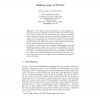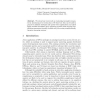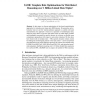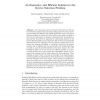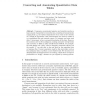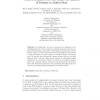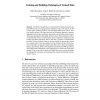SEMWEB
2010
Springer
13 years 9 months ago
2010
Springer
RDF(S) and OWL 2 currently support only static ontologies. In practice, however, the truth of statements often changes with time, and Semantic Web applications often need to repres...
SEMWEB
2010
Springer
13 years 9 months ago
2010
Springer
Abstract. Twitter enjoys enormous popularity as a micro-blogging service largely due to its simplicity. On the downside, there is little organization to the Twitterverse and making...
SEMWEB
2010
Springer
13 years 9 months ago
2010
Springer
Many applications make use of named entity classification. Machine learning is the preferred technique adopted for many named entity classification methods where the choice of feat...
SEMWEB
2010
Springer
13 years 9 months ago
2010
Springer
Abstract. We extend our recent work on evaluating incomplete reasoners by introducing strict testing bases. We show how they can be used in practice to identify ontologies and quer...
SEMWEB
2010
Springer
13 years 9 months ago
2010
Springer
SEMWEB
2010
Springer
13 years 9 months ago
2010
Springer
Given the large number of Semantic Web Services that can be created from online sources by using existing annotation tools, expressive formalisms and efficient and scalable approac...
SEMWEB
2010
Springer
13 years 9 months ago
2010
Springer
Companies, governmental agencies and scientists produce a large amount of quantitative (research) data, consisting of measurements ranging from e.g. the surface temperatures of an ...
SEMWEB
2010
Springer
13 years 9 months ago
2010
Springer
Abstract. Measuring similarity between ontologies can be very useful for different purposes, e.g., finding an ontology to replace another, or finding an ontology in which queries c...
SEMWEB
2010
Springer
13 years 9 months ago
2010
Springer
Abstract. In Linked Data, the use of owl:sameAs is ubiquitous in interlinking data-sets. There is however, ongoing discussion about its use, and potential misuse, particularly with...
SEMWEB
2010
Springer
13 years 9 months ago
2010
Springer
The Web of Linked Data is characterized by linking structured data from different sources using equivalence statements, such as owl:sameAs, as well as other types of linked propert...

